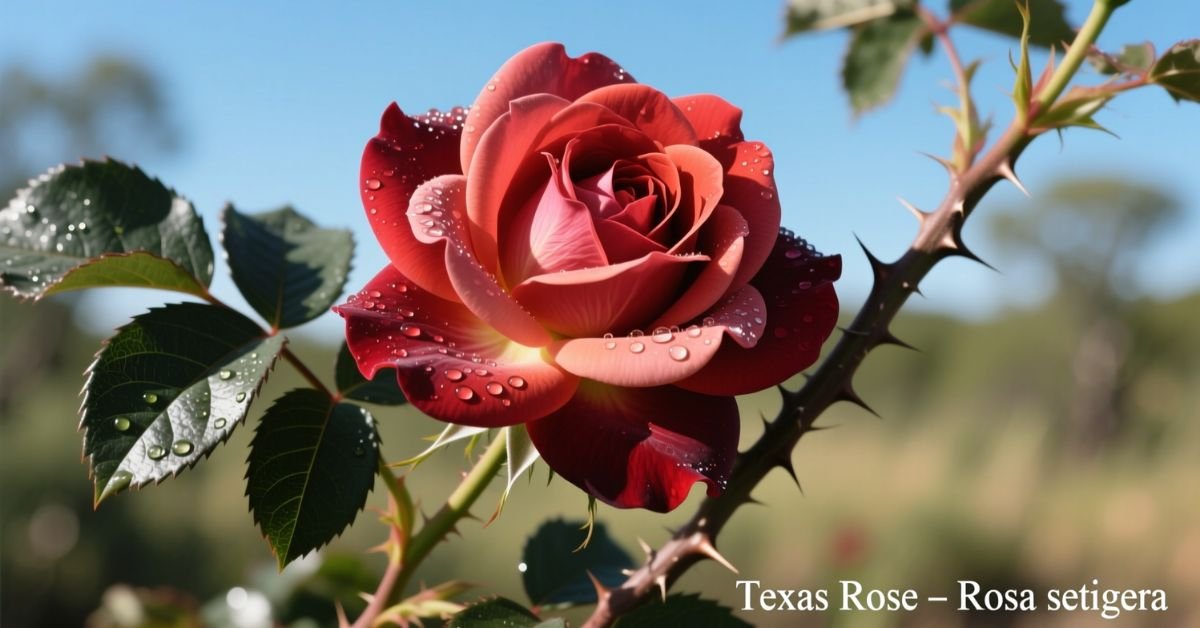Introduction
The Texas rose plant is a hardy flowering shrub. It thrives in warm climates and dry soils. This plant is known for its vibrant blooms and rich fragrance. It adds color and life to any outdoor space. Gardeners value it for its strength and beauty.
Imagine stepping into your garden and seeing bright roses every day. The Texas rose plant offers that charm. Its blooms attract birds, butterflies, and admiration from visitors. This plant transforms plain spaces into colorful retreats.
It grows best in full sun and well drained soil. Regular pruning helps maintain its shape and encourage blooms. The Texas rose plant is low maintenance yet highly rewarding for gardeners.
Growing Conditions
Ideal Environment
This plant loves warm and sunny spots. It grows best in well drained, sandy, or rocky soil. Once established, it tolerates heat and drought very well. Full sun helps it produce more flowers.
Care Tips
Water deeply but not too often. Prune lightly to keep a compact shape and encourage new blooms. Use a light fertilizer in spring for healthy growth. This plant is low maintenance and perfect for easy gardens.
Sunlight
The Texas Rose Plant loves full sun. It needs at least 6 to 8 hours of direct sunlight each day. Morning sun is the best for healthy growth.

Sunlight helps the plant make strong stems and bright blooms. Without enough sun, it may grow weak and produce fewer flowers.
Soil
The Texas Rose Plant loves full sun. It needs at least six to eight hours of direct sunlight each day. Morning sun helps the plant grow strong and healthy. Without enough light, it will produce fewer blooms. Choose an open, sunny spot in your garden for the best results.
Watering
The Texas Rose Plant needs regular but balanced watering. Give it deep water once or twice a week. Let the soil dry slightly between each watering. This helps prevent root rot and keeps the plant healthy. Early morning watering works best.
Overwatering can harm the roots. Check the soil before you water again. If the top inch feels dry, it’s time to water. Use a slow, steady stream to soak the soil. This method encourages strong root growth.
Care Tips for the Texas Rose Plant
- Pruning: Trim dead or weak stems in early spring to encourage new growth.
- Fertilizer: Use a balanced fertilizer every 4 to 6 weeks during the growing season.
- Mulching: Add a layer of mulch around the base to retain moisture and control weeds.
Benefits of the Texas Rose Plant
| Feature | Benefit |
| Colorful Blooms | Adds beauty and warmth to gardens |
| Heat Resistant | Thrives in hot Texas style climates |
| Low Care | Perfect for busy gardeners |
| Versatile Use | Works well in beds, borders, or pots |
Uses in Landscaping
The Texas Rose Plant adds color and charm to outdoor spaces. It works well in many garden designs. Its bright blooms make any area stand out. You can plant it alone or mix it with other flowers for variety.

It is also a practical choice for easy care landscaping. The plant is heat tolerant and low maintenance. This makes it perfect for busy gardeners or dry regions. It can even grow well in containers on patios.
Key Uses:
- Adds vibrant color to garden beds and borders.
- Creates striking edges along pathways.
- Brightens patios or balconies in pots.
- Works as a focal point in small or large gardens.
- Makes a beautiful gift plant for outdoor lovers.
Yellowing Leaves
Yellowing leaves often mean the plant is getting too much or too little water. Check the soil before watering. Make sure it drains well and is not waterlogged. Adding compost can help improve soil quality and prevent stress.
Black Spots on Leaves
Black spots are a common fungal disease in roses. They spread in warm and humid conditions. Remove the affected leaves right away. Keep the foliage dry and apply a mild fungicide if needed.
Aphids on Buds
Aphids are tiny insects that gather on new buds and stems. They suck plant sap and weaken the plant. Wash them off with water or spray a mix of mild soap and water. Natural predators like ladybugs also help control them.
Poor Flowering
Poor flowering often happens due to low sunlight or lack of nutrients. Place the plant in a sunny spot. Feed it regularly with a balanced rose fertilizer. Prune old stems to encourage fresh growth and more blooms.
Root Rot
Root rot is caused by overwatering or poorly drained soil. It makes the roots soft and weak. Reduce watering and improve drainage immediately. Replant in healthier soil if the damage is severe.
Conclusion
The Texas Rose Plant is more than just a pretty flower. It’s a hardy, versatile plant that brings color, warmth, and charm to any garden. With proper care, it will bloom beautifully and become a lasting highlight in your outdoor space.
FAQs about Texas Rose Plant
1. How much sunlight does the Texas Rose Plant need?
It needs at least 6–8 hours of direct sunlight each day for healthy growth.
2. How often should I water the Texas Rose Plant?
Water deeply once or twice a week and let the soil dry slightly between waterings.
3. What type of soil is best for the Texas Rose Plant?
Well drained, slightly acidic to neutral soil enriched with organic matter works best.
4. When should I prune the Texas Rose Plant?
Prune in late winter or early spring to remove dead stems and encourage new growth.
5. Can the Texas Rose Plant grow in containers?
Yes, it grows well in large pots or containers placed in sunny spots.


